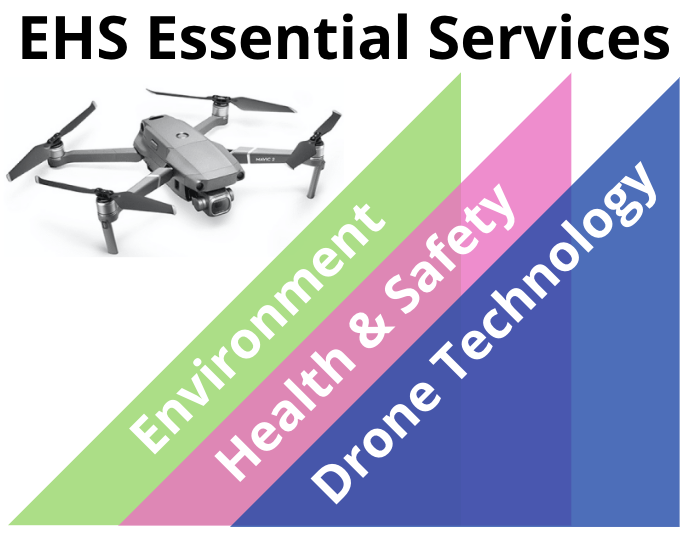Title Page
-
Project/ Site
- Avonhead
- Blenheim
- Boulcott
- Cambridge
- Casebrook
- Half Moon Bay
- Havelock North
- Hobsonville
- Kelvin Grove
- Keneperu
- Levin
- Masterton
- Milldale
- Papamoa
- Pohutakawa
- Prebbleton
- Rangiora
- Richmond
- St. Johns
- Te Awa
- Trentham
- Waikanae
- Whangarei
- Other
-
Project/ Site
-
Project Manager
- Grant O'Toole
- Darren Mead
- Geoff Sanders
- Andy Hamilton
- Kelvin Flockhart
- Nick Wiley
- Chris Hawkins
- Brad Polglase
- Brian Cullen
- Chris Furminger
- Steve Wood
- Kev Merriman
- Alan Steel
- Greg Deuchar
- Andrew King
- Alex Kelly
- Other
-
Project Manager
-
GCM
- Alan Steel
- Allan Shortland
- Andrew King
- Joe Roberts
- Paul Fairbrother
- Stuart West
- Terence Beach
- Other
-
GCM
-
Prepared by
-
Conducted on
Summary of Findings
-
Note: This section is to be completed following the conclusion of the Critical Risk Audit.
-
Please provide a brief summary of the Audit findings:
-
Assessment Criteria
1. Summerset Policy Check
-
Relevant to this site inspection?
-
1.1 Is the Summerset SSSP readily available and has it been reviewed every quarter?
-
Please provide a brief explanation for selecting 'NA':
-
1.2 Is the Project Risk Register readily available and has it been reviewed every quarter?
-
Please provide a brief explanation for selecting 'NA':
-
1.3 Have the latest Safety Alerts and Knowledge Shares been communicated with all and posted on the notice board?
-
Please provide a brief explanation for selecting 'NA':
-
1.4 Are there any open actions in DoneSafe?
-
Please provide a brief explanation for selecting 'NA':
-
What is the reason for not completing this section of the Audit?
2. Summerset Critical Risks
-
Which Summerset Critical Risk will you be reviewing?
- Fall from Heights
- Lifting Operations
- Working around Mobile Plant
- Excavation and Trenching
- Temporary Works
- Materials falling from Height
- Exposure to Dust & Silica
- Contact with Energy Sources
2.1 Fall from Heights
-
Note: Working at height means working in a place where a person could be injured if they fell from one level to another. Rather than thinking about how high the fall will be, consider how someone could fall and what they might land on.
-
2.1.1 Has a Task Analysis been provided and communicated for Work at Heights?
-
Please provide a brief explanation for selecting 'NA':
-
2.1.2 Have the workers working at height (operating MEWPs, erecting scaffold, using a harness/fall arrest/restraint), had verification of competence (VOC) undertaken for the works?
-
Please provide a brief explanation for selecting 'NA':
-
2.1.3 Has an appropriate fall rescue plan been provided as part of the Task Analysis and has it been communicated to the workers?
-
Please provide a brief explanation for selecting 'NA':
-
2.1.4 Are all fall edges, including excavations and fall-through hazards, etc., protected or covered by a physical barrier of sufficient height and/ or strength to prevent the fall of a person?
-
Please provide a brief explanation for selecting 'NA':
-
2.1.5 Is the most appropriate system being used for Working at Height when it's required (e.g., safety harnesses, correct lanyards, inertia blocks, fall bags, safety nets, etc.)?
-
Please provide a brief explanation for selecting 'NA':
Fall from Heights Elements
-
Which of the following Working at Height elements are you checking as part of the Critical Risk audit?
- Scaffolding
- Safety Nets
- Height Access Equipment
- Fall Arrest/ Fall Restraint Systems
- None
Scaffolding
-
2.1.6 Are scaffold tags present at each point of entry, completed correctly and checked in the last 7 days by a certified scaffolder.
-
Please provide a brief explanation for selecting 'NA':
-
2.1.7 Is the scaffold correctly rated - light, medium or heavy duty and is this information noted on the scaffold tag?
-
Please provide a brief explanation for selecting 'NA':
-
2.1.8 Are the loads on the scaffold/ loading bays in line with their duty rating / SWL and, where required, has signage been posted to indicate the SWL?
-
Please provide a brief explanation for selecting 'NA':
-
2.1.9 Are stairs used for access, and is there a tortured path with guard rails fitted?
-
Please provide a brief explanation for selecting 'NA':
-
2.1.10 Where ladders are used for access, are they fixed at the top & bottom and fitted with a self-closing gate that opens inward?
-
Please provide a brief explanation for selecting 'NA':
-
Note: Preference is for stair access.
-
2.1.11 Is the scaffold componentry in good condition?
-
Please provide a brief explanation for selecting 'NA':
-
2.1.12 Are there any elements of the scaffold that is missing (e.g., guardrails, toe boards, brick guards, bracing elements, ties etc.)?
-
Please provide a brief explanation for selecting 'NA':
-
2.1.13 Is the scaffold a maximum of 300mm off the face of the building? If not, are hop-ups or guardrails fitted, or are there other means to protect a person from falling?
-
Please provide a brief explanation for selecting 'NA':
-
2.1.14 When the height of the scaffold is more than three times the width of the base, is the scaffold tied into the supporting structure, and if not, is the scaffold rakered or buttressed?
-
Please provide a brief explanation for selecting 'NA':
Safety Nets
-
2.1.15 Are safety nets installed correctly and free from debris?
-
Please provide a brief explanation for selecting 'NA':
-
Note: Net sag should be no more than 5% to 10% of the net’s shortest side. There should be no big gaps (no more than 100mm) around the edges and hooks should not be overfilled.
-
2.1.16 Does the area below the nets have enough room to allow a person to fall safely?
-
Please provide a brief explanation for selecting 'NA':
-
Note: There should be enough clearance below the safety net to allow for it to deform when a person falls onto it without them striking any obstacles.
-
2.1.17 Does the safety net have a label or similar (e.g. QR Code) showing its serial number, class and size of net, mesh size, etc.?
-
Please provide a brief explanation for selecting 'NA':
Height Access Equipment
-
2.1.18 Is an exclusion zone in place and/ or a spotter used to prevent unauthorised access?
-
Please provide a brief explanation for selecting 'NA':
-
2.1.19 Is the MEWP in good condition and working platform free from loose materials?
-
Please provide a brief explanation for selecting 'NA':
-
2.1.20 Has the MEWP log book been completed?
-
Please provide a brief explanation for selecting 'NA':
-
2.1.21 Are MEWP's set up in accordance with the manufactures instructions?
-
Please provide a brief explanation for selecting 'NA':
-
2.1.22 Are MEWPs being used on level, stable ground and free of overhead obstructions?
-
Please provide a brief explanation for selecting 'NA':
-
2.1.23 Is the operator of cherry pickers or boom-style MEWPs using a safety harness with a lanyard and a short energy absorber connected to a certified anchor point?
-
Please provide a brief explanation for selecting 'NA':
-
2.1.24 Is the 6 monthly inspection in date?
-
Please provide a brief explanation for selecting 'NA':
-
2.1.25 If an MEWP is being used, has a rescue plan been documented in their TA, SWMS, or similar, and has it been communicated to the workers?
-
Please provide a brief explanation for selecting 'NA':
Fall Arrest/ Fall Restraint
-
2.1.26 Where fall restraint systems are in use, is the restraint lanyard of a length to prevent the person from reaching the exposed edge?
-
Please provide a brief explanation for selecting 'NA':
-
2.1.27 Where fall restraint systems are in use, has the lanyard been connected/ clipped in to a suitable anchor point/ system?
-
Please provide a brief explanation for selecting 'NA':
-
2.1.28 Is the fall arrest equipment tagged, certified and in date?
-
Please provide a brief explanation for selecting 'NA':
-
Note: Should be checked at least every 6 months.
-
2.1.29 Is the equipment in good condition with no visible damage?
-
Please provide a brief explanation for selecting 'NA':
-
2.1.30 If a fall arrest system with shock absorbers is being used, has it been configured to accommodate the user's weight and minimize fall distance?
-
Please provide a brief explanation for selecting 'NA':
-
Note: Weight ratings differ, and a shock absorber should be rated for the person using it. They are generally rated for weights up to 140kgs. A heavy-duty shock absorber will be required for people heavier than 140kgs but less than 190 kgs.
-
2.1.31 Where fall restraint/ arrest systems are in use, has a rescue plan been documented (e.g. in TA, SWMS, or similar) and has it been communicated to the workers?
-
Please provide a brief explanation for selecting 'NA':
-
Please provide a brief explanation for selecting 'None':
2.2 Lifting Operations
-
2.2.1 Has a Task Analysis & Lift Plan been provided and communicated for Lifting Operations?
-
Please provide a brief explanation for selecting 'NA':
-
Note: Check that the lift plan reflects the lift occurring.
-
2.2.2 Has a pre-start mechanical checklist been completed by the operator prior to the lift?
-
Please provide a brief explanation for selecting 'NA':
-
2.2.3 Have the ground conditions been checked to ensure stability (e.g., have as-builts been checked for underground services, etc. )
-
Please provide a brief explanation for selecting 'NA':
-
2.2.4 Has the presence of utility services been verified on the lift plan (overhead, over ground and underground)?
-
Please provide a brief explanation for selecting 'NA':
-
2.2.5 Is a minimum of 4m clearance (Minimum Approach Distance) maintained when lifting near overhead power lines, and if not, has a close approach permit being received from the asset owner?
-
Please provide a brief explanation for selecting 'NA':
-
2.2.6 Have weather conditions been checked by the operator, and is he/she monitoring them on an ongoing basis?
-
Please provide a brief explanation for selecting 'NA':
-
2.2.7 Is the Crane/ HiAb Operator and Dogman/ Rigger trained and competent?
-
Please provide a brief explanation for selecting 'NA':
-
Note: Must have current unit standard 16617 or 3795 and 30072.
-
2.2.8 Is an exclusion zone established around the lifting area and is it effectively managed to prevent lifting, suspending, or placing loads over people?
-
Please provide a brief explanation for selecting 'NA':
-
2.2.9 Is the exclusion zone visually identifiable and isolated, with barriers, cones, bunting, danger tape, signage, etc., effectively used and managed to prevent unauthorized access?
-
Please provide a brief explanation for selecting 'NA':
-
2.2.10 Is the exclusion zone fit for purpose to enable safe failure of a load and to protect the outriggers from impact by passing traffic?
-
Please provide a brief explanation for selecting 'NA':
-
2.2.11 Does the lifting device, e.g. the HIAB Crane, have a current inspection certificate?
-
Please provide a brief explanation for selecting 'NA':
-
Note: This could also be a plate attached to the crane.
-
2.2.12 Are lifting devices and equipment being used within the manufacturers safe working load (SWL) or working load limits?
-
Please provide a brief explanation for selecting 'NA':
-
Note: Verify with the HIAB operator, for example, request the load chart, manufacturer's manual, and inspect the rigging gear tag for the safe working load.
-
2.2.13 Are all lifting equipment items such as chains, slings, man cages, etc., properly tagged, certified, and within the expiration date, showing no signs of damage?
-
Please provide a brief explanation for selecting 'NA':
-
2.2.14 Are the outriggers fully extended on firm, level ground and are they supported by rubber mats/ dunnage/ swamp mats etc.?
-
Please provide a brief explanation for selecting 'NA':
-
2.2.15 Is the load adequately secured, including appropriate covering where necessary, to maintain stability and prevent any items from coming loose throughout all stages of the lifting operation?
-
Please provide a brief explanation for selecting 'NA':
-
2.2.16 Is the placement of loads hands-free, with taglines being used to guide loads during lifting and placing?
-
Please provide a brief explanation for selecting 'NA':
-
2.2.17 Has the possibility of clashes with other lifting devices and/or plant/cranes on site been taken into account in the lift plan and risk assessment e.g., as outlined in the task analysis?
-
Please provide a brief explanation for selecting 'NA':
-
2.2.18 If applicable, has the Civil Aviation Authority been notified (within a Low Flying Zone - CAR Part 77) to authorize the erection of the crane? Have the permit requirements, such as the installation of flashing lights, been fulfilled?
-
Please provide a brief explanation for selecting 'NA':
-
2.2.19 Is the lift process being carried out in accordance with the Summerset SSSP?
-
Please provide a brief explanation for selecting 'NA':
2.3 Working around Mobile Plant
-
2.3.1 Has a Task Analysis been provided and communicated for Working around Mobile Plant?
-
Please provide a brief explanation for selecting 'NA':
-
2.3.2 Are the authorised mobile plant operators verified as competent to use the plant they are operating?
-
Please provide a brief explanation for selecting 'NA':
-
2.3.3 Has an exclusion zone been setup around the work area and is it effective?
-
Please provide a brief explanation for selecting 'NA':
-
2.3.4 Is there a documented safe work methodology (e.g., task analysis, drawing mark-up) to ensure safe separation of people and plant?
-
Please provide a brief explanation for selecting 'NA':
-
Note: This may include the use of barriers, danger tape, cones, positive communication, dedicated access routes, signage, etc.
-
2.3.5 If more than one piece of mobile plant is operating in the same work area, have appropriate controls been implemented to minimize the potential for interface issues?
-
Please provide a brief explanation for selecting 'NA':
-
Note: This may include agreed-upon communication processes such as verbal, visual, or physical methods.
-
2.3.6 Is mobile plant and equipment left in a safe condition to prevent both accidental movement and unauthorized use when left unattended?
-
Please provide a brief explanation for selecting 'NA':
-
Note: This includes actions such as turning off the engine, removing keys, applying brakes, and securing them with chocking, trenches, or by turning wheels toward a wall where applicable.
-
2.3.7 Does the plant have all the safety-related devices, such as a reversing camera, interlocks, slew height restrictions, ROPs, etc., as outlined in the plant risk assessment, standard operating procedures, and manufacturer's instructions?
-
Please provide a brief explanation for selecting 'NA':
-
2.3.8 Have light and heavy vehicles been adequately separated and parked according to the requirements of the TMP?
-
Please provide a brief explanation for selecting 'NA':
-
2.3.9 Are access and haul roads being maintained and kept clear of potential hazards such as potholes, manholes, culverts, excavations, etc.?
-
Please provide a brief explanation for selecting 'NA':
2.4 Excavation and Trenching
-
2.4.1 Has a pre-start meeting been held with the contractor's site management team before work commences to ensure that project-related health and safety risks and requirements are thoroughly understood?
-
Please provide a brief explanation for selecting 'NA':
-
2.4.2 Has a Task Analysis been provided and communicated for Excavation and Trenching?
-
Please provide a brief explanation for selecting 'NA':
-
2.4.3 Has a plant pre-start inspection process been implemented for checking plant and equipment?
-
Please provide a brief explanation for selecting 'NA':
-
2.4.4 Has a Permit to Dig been completed and communicated to all parties before work commenced?
-
Please provide a brief explanation for selecting 'NA':
-
2.4.5 Have potential sources of contamination, underground, and overhead services been identified to ensure they have been positively located, marked, and isolated prior to breaking the ground?
-
Please provide a brief explanation for selecting 'NA':
-
2.4.6 Has an emergency plan been prepared, discussed, and communicated to the workers, including instructions on how to raise the alarm?
-
Please provide a brief explanation for selecting 'NA':
-
2.4.7 Have mobile plant operators been verified as competent, and do they hold the appropriate licenses/tickets (as required) with evidence of training available for review?
-
Please provide a brief explanation for selecting 'NA':
-
2.4.8 Are barriers, exclusion zones, lighting, and signage in place to prevent people, plant, objects, and equipment from entering the work area or falling into the excavation/trench?
-
Please provide a brief explanation for selecting 'NA':
-
2.4.9 Is spoil placement maintained at a minimum distance of 1 meter from the zone of influence to mitigate the risk of ground collapse induced by external loads near the excavation?
-
Please provide a brief explanation for selecting 'NA':
-
Note: This distance will be greater if the ground is soft or unstable. The same rule applies for tools, equipment, and mobile plant.
-
2.4.10 Is there a risk of atmospheric contamination and/or build-up of fumes, and if so, is it being managed correctly?
-
Please provide a brief explanation for selecting 'NA':
-
2.4.11 If spotters are being used, are they positioned in a safe location outside of the slew radius of the excavator and has this been identified in the contractors Task Analysis?
-
Please provide a brief explanation for selecting 'NA':
-
2.4.12 Has safe access been provided e.g., ladder, ramp, steps cut in etc. where workers are required to enter an excavation?
-
Please provide a brief explanation for selecting 'NA':
-
2.4.13 Have benches, shoring, or trench shields been provided to mitigate the risk of collapse in excavations or trenches greater than 1.5m in depth where workers are required to enter or where a risk of collapse has been identified?
-
Please provide a brief explanation for selecting 'NA':
2.5 Temporary Works
-
2.5.1 Is there a Task Analysis and Temporary Works Design in place for the ongoing installation/ removal of temporary works, and has this been communicated to all involved parties?
-
Please provide a brief explanation for selecting 'NA':
-
Note: The Task Analysis and TW Design should comprehensively address the methodology for both installation and removal, encompassing all relevant aspects pertaining to the sequence of installing and/or removing TW elements.
-
2.5.2 Is there a Temporary Works Plan (TWP) in place and has a Temporary Works Coordinator been appointed for the project?
-
Please provide a brief explanation for selecting 'NA':
-
2.5.3 Is the most recent Temporary Works design available for reference?
-
Please provide a brief explanation for selecting 'NA':
-
2.5.4 Is there verification that the most recent Temporary Works design has been reviewed and approved?
-
Please provide a brief explanation for selecting 'NA':
-
2.5.5 Are Temporary Works designed by a competent person as defined in the TWP?
-
Please provide a brief explanation for selecting 'NA':
-
2.5.6 Does the permit to load take into account the approved design parameters clarifying potential loads to be placed on the Temporary Works?
-
Please provide a brief explanation for selecting 'NA':
-
2.5.7 Is there verification that temporary works has been assembled/ installed according to design?
-
Please provide a brief explanation for selecting 'NA':
-
2.5.8 Is there verification that the Temporary Works, including fencing, trenches, scaffold, propping, panels, etc. has been inspected before use?
-
Please provide a brief explanation for selecting 'NA':
-
2.5.9 Are all Temporary Works physically protected or isolated from potential collisions with moving traffic, plant, or materials hoisting?
-
Please provide a brief explanation for selecting 'NA':
-
2.5.10 Is Temporary Works monitored/ inspected/ reviewed in accordance with the TWP?
-
Please provide a brief explanation for selecting 'NA':
2.6 Materials falling from Heights
-
2.6.1 Are all tools and loose materials secured or protected from falling (e.g., using toeboards, lanyards, or nets) when work is being performed at height?
-
Please provide a brief explanation for selecting 'NA':
-
2.6.2 Are measures such as brick guards, crash decks, or scrim in place and secured where materials are stored at height?
-
Please provide a brief explanation for selecting 'NA':
-
2.6.3 Are horizontal and vertical penetrations through floors and wall openings (e.g., service penetrations and risers) adequately protected to prevent loose materials from falling through?
-
Please provide a brief explanation for selecting 'NA':
-
2.6.4 Are materials secured to prevent uplift during inclement weather?
-
Please provide a brief explanation for selecting 'NA':
-
2.6.5 Are arrangements, such as exclusion zones, in place to reduce the risk to persons working below areas where work at height is being conducted?
-
Please provide a brief explanation for selecting 'NA':
-
2.6.6 Is an adequate exclusion zone established with barriers, cones, bunting, danger tape, signage, etc.?
-
Please provide a brief explanation for selecting 'NA':
-
2.6.7 Are materials stored at height arranged in such a way as to prevent accidental release over edges or through penetrations?
-
Please provide a brief explanation for selecting 'NA':
-
Note: Loose materials should be strapped, wrapped or stored at ground level.
2.7 Exposure to Dust & Silica
-
2.7.1 Has a safe system of work been agreed upon before commencing works to minimize dust exposure?
-
Please provide a brief explanation for selecting 'NA':
-
2.7.2 Is dust generated being effectively controlled at the source using on-tool extraction (no visible plumes of dust)?
-
Please provide a brief explanation for selecting 'NA':
-
2.7.3 Are wet methods being used to suppress or contain dust when cutting, grinding, or drilling into concrete or stone-based products?
-
Please provide a brief explanation for selecting 'NA':
-
2.7.4 Is waste material and dust cleanup performed using wet cloths, wet sweeping, a low-pressure water hose, or vacuum systems with appropriate filters?
-
Please provide a brief explanation for selecting 'NA':
-
2.7.5 Is the extraction unit emptied regularly with correct waste bags, sealed, and disposed of properly?
-
Please provide a brief explanation for selecting 'NA':
-
Note: If bags are not used, are measures in place to control exposure when emptying the unit?
-
2.7.6 Is work being done in the most suitable location and has an exclusion zone been established i.e. have they considered the wind direction, other workers in the area, etc.?
-
Please provide a brief explanation for selecting 'NA':
-
Note: Is the cutting area well ventilated or outdoors in the open so as not to increase potential exposure to others?
-
2.7.7 Is a P2 respirator or dust mask being used at a minimum?
-
Please provide a brief explanation for selecting 'NA':
-
Note: Where routine activities include exposure to silica, half-face, supplied air or full-face respirators must be considered.
2.8 Contact with Energy Sources
-
2.8.1 Is a safe system of work (e.g., SWMS, TA) in place and communicated to ensure compliance with asset owners' minimum approach requirements for activities involving potential contact with live conductors?
-
Please provide a brief explanation for selecting 'NA':
-
Note: This includes permits to dig, lift plans, approach or access permits, TMP, and services stand over.
-
2.8.2 Has a Certificate of Compliance and Record of Inspection been completed within the last 6 months for all temporary power supply switchboards?
-
Please provide a brief explanation for selecting 'NA':
-
2.8.3 Are all portable electrical equipment (including portable and temporary supply) using residual circuit devices (RCDs) that display a current inspection tag or certificate?
-
Please provide a brief explanation for selecting 'NA':
-
2.8.4 Are Lifeguards, power leads and power tools free from damage, and tested within the past 3 months where appropriate (as per AS/NZS 3760)?
-
Please provide a brief explanation for selecting 'NA':
-
2.8.5 Are the temporary supply units supported, stable, sealed, secured, properly signed, waterproof, and in good condition?
-
Please provide a brief explanation for selecting 'NA':
-
2.8.6 Are all portable electrical equipment, including leads and multiplugs industrial rated?
-
Please provide a brief explanation for selecting 'NA':
-
2.8.7 Has lead management been arranged in such a way as to reduce slips, trips and fall risks and accidental damage?
-
Please provide a brief explanation for selecting 'NA':
-
2.8.8 Has a LOTO system been applied i.e., live electrical circuits identified and isolated before any penetrations of surfaces such as walls, flooring or roofing took place, and verified?
-
Please provide a brief explanation for selecting 'NA':
-
Note: Works completed after 2nd fix such as tiling, cabinetry installation and installation of splashbacks and tiles may require working around exposed wires.
-
2.8.9 Are workers performing work on electrical systems licensed and registered electrical workers or apprentices supervised by licensed & registered electrical supervisors?
-
Please provide a brief explanation for selecting 'NA':
-
Note: Competent and registered as per Electrical Workers Registration Board requirements.

















